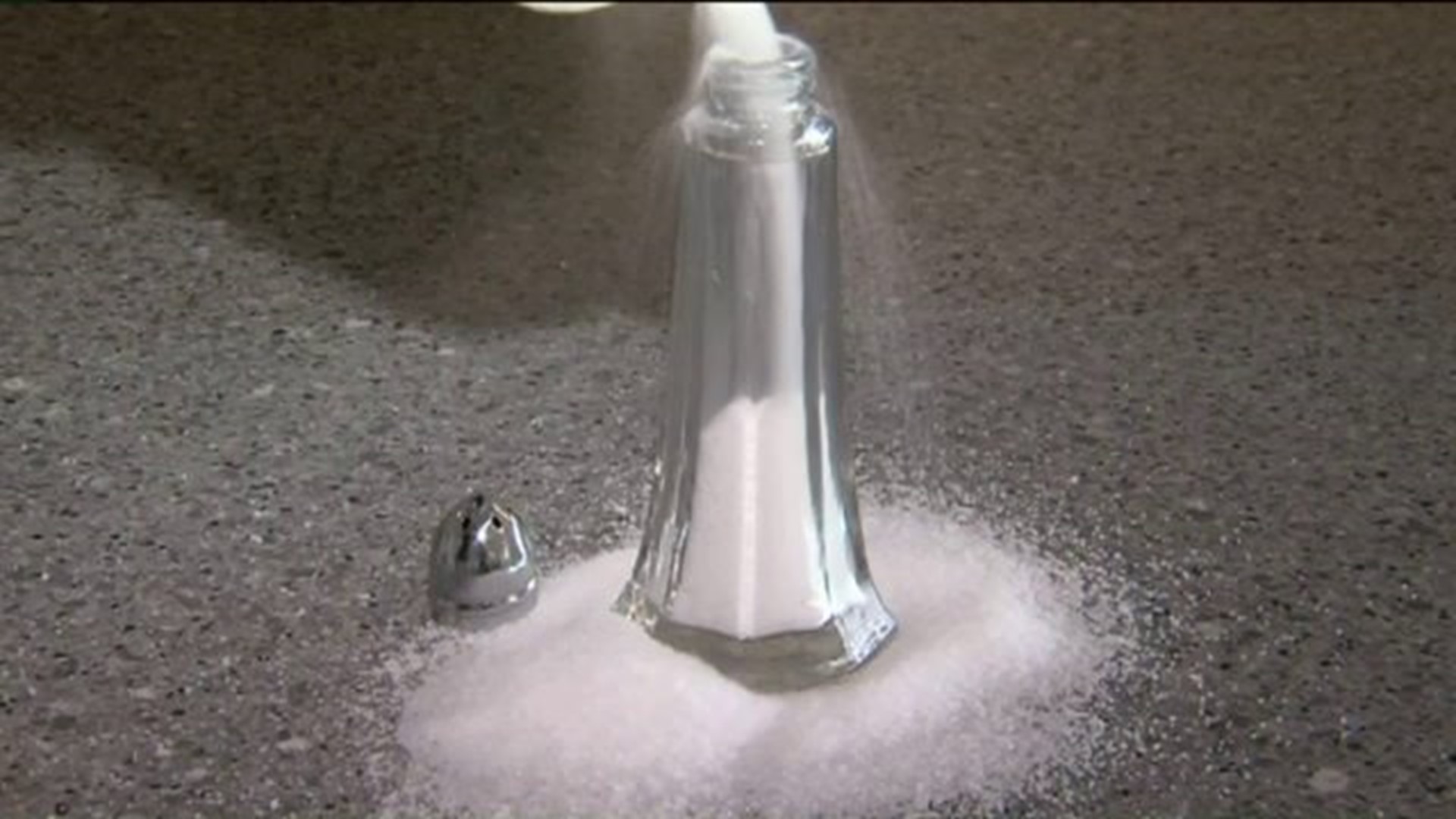If your friends or family have busted you for using too much salt at the dinner table, your genetics may be to blame!
A new study by a doctoral student at the University of Kentucky College of Nursing found that some people may carry a certain gene that makes them crave the taste of salt.
Weis Markets Registered Dietitian Kathryn Long helped explain the new research that came out early November Wednesday on Newswatch 16 This Morning with Ryan Leckey.
Here’s Long’s explanation of the study and tips on what to do if you find yourself using too much salt.
“The study tracked the diets of 407 people in rural Kentucky. Participants analyzed had two or more heart disease risk factors. The researchers also did genetic testing to see whether participants carried the gene variation that enhances bitter taste. People in the study who had a certain variation of a gene called TAS2R48 were nearly twice as likely to exceed the limit of 2300 mg of sodium, compared with the people who didn't have this variation.
It could be that they taste salt more intensely and enjoy it more causing them to prefer heavily salted foods, or it could be that people use salt to mask the bitter taste of some foods. The findings are fascinating but preliminary, and more research is needed to fully understand how people's genes impact how much sodium they eat.”
Long says whether or not you have this gene, sodium reduction is good for your health. Here’s a more detailed breakdown she put together:
WHY?
So what’s behind that insatiable sweet or salty tooth? A lot of it is genetic. Everyone inherits a unique combination of genes that determine taste sensitivity. Genes also determine the number of taste buds you have. The environment also plays a role as taste is largely dependent on what you are used to eating. So if you grew up indulging on potato chips, you’re more likely to prefer that same salty taste as you get older.
Recommendations
According to the American Heart Association (AHA), Americans eat more than 3,400 mg of sodium each day and 9 out of 10 people consume too much sodium. The AHA recommends no more than 2,300 mg a day and an ideal limit of no more than 1,500 mg per day.
Consequences of Eating Too Much Sodium
Too much sodium in one’s diet is a risk factor for developing high blood pressure, which can lead to heart attack and stroke. Heart disease is the leading cause of death in the U.S.
Excess sodium can even lead to osteoporosis, kidney disease and problems with your vision. Cosmetically, excess sodium can also lead to water retention leading to puffiness and bloating.
It can be hard to motivate young people to cut back on sodium because chronic high blood pressure is a long-term consequence that takes years to build up. Blood pressure inevitably rises with age. According to the AHA, 90% of adults are expected to develop high blood pressure in their lifetimes. Kids who consume a high sodium diet are twice as likely to develop high blood pressure as kids who have low sodium diets.
At 50 years old, life expectancy is five years longer for people with normal blood pressure.
More than 75 percent of the sodium Americans eat comes from processed, prepackaged and restaurant foods and not from the salt shaker. It’s important to read labels.
Add Salty Taste Without Using Salt
When we stop using salt abruptly, there’s a dramatic difference in the taste of the food. The challenge is not just learning how to get flavor into food without using salt; it's learning how to get the salty flavor you’re craving.
Here are three alternatives to help you achieve a salty flavor without adding salt:
- Use fresh lemons, limes, or most any citrus fruit. Oftentimes when a dish tastes flat, it needs a little acid – not salt. Adding citrus is one of the best flavor tips for getting a salty flavor without using salt. Fresh lemon is one of the closest natural flavors to salt. You taste salt and you pucker-up; you taste fresh lemon and also pucker-up. Just a squeeze of fresh lemon juice or a little freshly grated lemon zest will brighten food with a salty taste.
- Tips: Add a squeeze of lemon to salads, steamed or sautéed veggies, grilled fish or chicken, sauces, and soups. Don’t limit yourself to just lemon – lime, orange, tangerine, and grapefruit juices are also equal contenders depending on the dish.
- You can also add a strip or two of fresh lemon peel to water when cooking to help flavor the water without salt. Try this especially when poaching fish, or chicken, even vegetables.
- Try using different vinegars. Again, if a dish tastes “flat” add a dash of acid. Almost any vinegar will work such as balsamic vinegar, white vinegar, red wine vinegar. Vinegar adds tangy taste without the salt.
- Tips: Add vinegar to salad dressing, sauces, and soup to lift the flavor
- Add a little red wine vinegar to a beef stew, lemon juice to mayonnaise, balsamic vinegar to homemade salad dressings, white vinegar to coleslaw or cucumber salad.
- Use a variety of salt-free seasonings. Especially salt-free seasonings with a lemony or citrusy flavor.
Remember, your taste buds change every 2-3 weeks so you’ll get used to different flavors and a lower sodium diet.
Conclusion: Apply these simple flavor tips and you will be amazed how flavorful your low sodium food can be.
Make your own SALT-ternative: Sunkist Citrus Salt
Ingredients:
- 2 tablespoons lemon zest
- 2 tablespoons orange zest
- 1/2 cup coarse salt (larger in size than table salt)
Directions:
- Preheat the oven 150°.
- Combine ingredients together on a baking sheet.
- Place in oven for 4-6 hours or until the citrus zest is totally dried.
- Let cool and store in a tightly covered container or jar.


